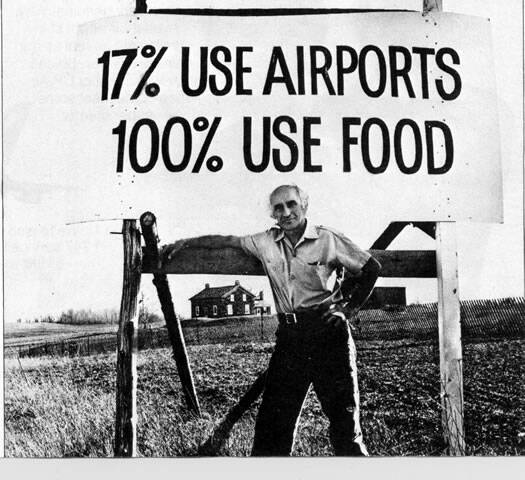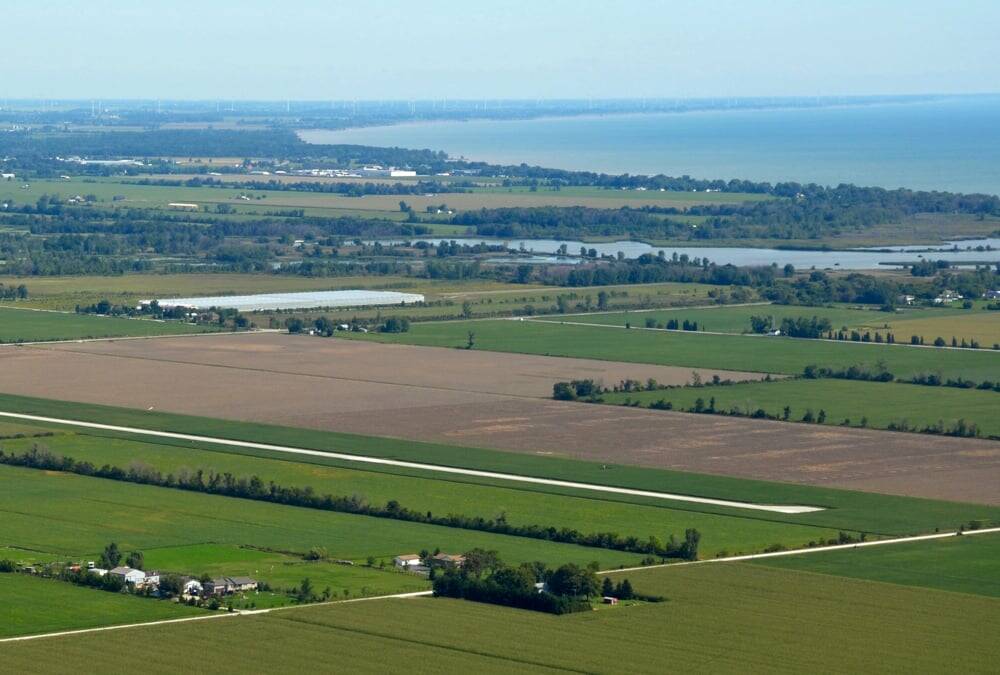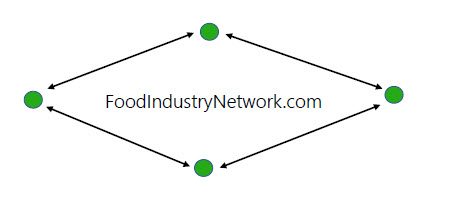Grounding of Pickering airport provides more certain future

The “vast majority” of the remaining 8,700 acres remaining in the Pickering Lands will be transferred to the Rouge National Urban Park (RNUP).
Read Also

New program aims to reduce phosphorus loading in Lake Erie
The newly launched Lake Erie Enhanced Analysis of Agriculture Practices (LEEAAP) research program aims to reduce phosphorus loading from agricultural…
A joint new release from Transport Canada and Parks Canada Jan. 27 confirmed the proposed Pickering Airport has been permanently grounded, providing those leasing land more certainty about the future.
Why it matters: The federal government has finally come to a decision on what will be done with the Pickering Lands, 53 years after it expropriated the land to build an airport north of Toronto.
In 1972, the federal government expropriated properties totalling 18,600 acres 56 kilometres northeast of Toronto, known as the Pickering Lands, to develop a new airport. Much of the land acquired was Class 1 farmland. The airport plan was put on hold in 1975 in favour of expanding existing airports, and Pickering Land properties have been leased by the federal government to residential, farm and commercial tenants ever since.
These lease agreements inspired successive waves of outcry – along with significant support from some business leaders and regional politicians – for over half a century.
“People got tired of waiting and waiting,” Ron Tapscott, who has cropped portions of the Pickering Lands for decades, told Farmtario. “It’s nice that it’s finally official.”
Mary Delaney, former and long-time chair of the Land Over Landings anti-airport group, told Farmtario the announcement wasn’t a surprise to either her organization or other stakeholders who have closely followed the story. She credited Pickering-Uxbridge MP Jennifer O’Connell with taking up the anti-airport cause about a decade ago and keeping successive federal ministers apprised of the reasons why maintaining the tract in Transport Canada ownership was the wrong path.
More than half of the original Pickering Lands had already been transferred to the RNUP through two separate decisions, first by Stephen Harper’s Conservatives in 2015, the second by the Liberals in 2018. Delaney said a decision on the remaining tract “had been very, very close, we believed, for over a year.”
Still, with Prime Minister Justin Trudeau’s recent decision to prorogue Parliament and step down as Liberal leader, Land Over Landings “began to feel like maybe it wasn’t going to happen. And that’s because we’ve learned over the years to play the long game, to celebrate our minor victories, and never to pop the cork until it actually is a done deal.”
The cork was popped on Jan. 27, though, with Delaney pointing to headlines posted by supporting organizations like the National Farmers’ Union (“a soaring achievement”) and the Mississaugas of Scugog Island First Nation (“the beginning of a productive path forward”) as evidence the federal decision came as a result of a widespread, multi-stakeholder opposition to the airport proposal.
However she stressed the Jan. 27 announcement doesn’t represent a total “slam-dunk” for Land Over Landings. A news release from the organization advises “we were told that the ‘vast majority’ of these ‘high conservation value lands’ will be transferred to Parks Canada, and a formal consultation process, involving local stakeholders, will soon be launched ‘to determine the best future uses of the lands.’ We are awaiting clarification of this aspect from the federal government.”
An official news release from Transport Canada states “a formal consultation process, including with existing tenants, Indigenous communities, and the public, will be launched in the coming weeks.” A separate news release from Parks Canada, meanwhile, describes an “intent to transfer the administration of lands with high conservation value” to the RNUP.
Minister of the Environment and Climate Change (MECC) Stephen Guilbeault, under whose bailiwick Parks Canada operates, told the well-attended news conference Jan. 27 that “a vast majority” of the remaining acreage will be transferred.
“We were told so many different versions over the past few months by different ministers’ offices and by Parks Canada,” said Delaney, who added that officials advised that a “study area” would be held back to determine if land transfer in that section should be managed differently.
She added it makes sense to omit built-up areas like the village of Brougham but stressed her organization’s “mandate is farmland” and expressed concern that high-quality farmland surrounding Brougham and elsewhere in the Lands may also be kept back.
Additionally, there’s uncertainty about how farmland leases will be administered in the future.
Tapscott was just a kid when his family’s two farms – a 100 acre parcel with the family home; the other 50 acres with the “hired hand’s home” – were expropriated in 1972. His parents used the money to purchase a third farm half an hour’s drive north of the proposed airport’s boundaries near Oakwood but the family continued living on the home farm under one-year leases with the feds.
“My mom and dad thought it was home,” he explained.
Today, Tapscott continues to farm those two farms, plus an additional 1,000 acres in the vicinity – both leased from Transport Canada and rented from private owners. He still owns the Oakwood farm but stopped farming it a few years ago, and now rents the farmland and house.
Tapscott and his brother remained as leaseholder residents in each of the houses the family formerly owned on the Pickering Lands until recently, when Ron and his wife relocated to the nearby village of Claremont.
A few years ago, Tapscott invested in tile drainage in Oakwood. Speaking to Farmtario, he admitted that’s something he always knew would be advantageous on the Pickering Lands.
“There are some nice pockets of land (in the tract) but it needs (to be) tile drained,” he commented. “When you’re on the back side of the month of May and you’re looking out your window at the wet fields, you get to thinking it might be worth it.”
It wasn’t until the past two years, however, that he saw any of his Pickering Lands neighbours invest in drainage. In late 2024, he decided to follow the lead and signed up to have 65 acres of his Pickering Lands tiled.
He says it’s not because any of the farmers anticipate that the farmland will eventually be sold back to farmers. But as with the Land Over Landings supporters, farmers in the vicinity began recognizing over the past several months that the uncertainty – including year-over-year leases that de-incentivized investment – would soon be over.
Future potential
Contacted by Farmtario, Parks Canada responded that “the Government of Canada recognizes that leaseholders and tenants expect stability as well as predictability and a formal consultation process will take place before a decision is made to use the remaining lands for alternate purposes. It should be noted that some of the Pickering lands are currently used for farming, and those current uses are one of the factors that should be considered before a final decision is made. Until that is completed, and a determination made, Parks Canada cannot speculate on lease transitions.”
Delaney described that response as “clear as mud.” The preferred vision for Land Over Landings, as described in the organization’s news release, is for “diversified agriculture on the Lands, and the consequent growth of agritourism, ecotourism, and trail-tourism (that) could soon deliver more than 2,100 new jobs and nearly $240 million in overall economic activity annually.”
Central to that vision, the organization’s past-chair explained, is making available small plots of land to “young and entrant farmers” to grow crops not widely produced in Canada but in high demand from the diverse cultural milieu of the Greater Toronto Area.
“It’s amazing what some farmers can do with a much smaller parcel of land,” she offered, “but farming in a very different way than what’s done on much of Ontario’s farmland.”
A version of that vision is already being pursued on limited parcels of land previously transferred from the Pickering Lands to the RNUP. It’s Giving Farm, located near the “ghost village” of Altona inside the RNUP, presented to the 2023 Ecological Farmers Association of Ontario annual convention about their experience securing access to farmland through a request for proposals (RFP) process initiated in 2022.
Lara Jerome is in the midst of – she hopes – following It’s Giving into the former Airport Lands. She began her journey into the convoluted RFP process in early 2023 after finding work as a farm labourer on an area market garden operation.
“No one in my family farms anymore,” she said, adding her roots are in Perth County and she worked previously on vegetable farms in Waterloo Region. “I don’t have generational wealth so purchasing land, especially in Ontario, wasn’t an option.”
She describes farmland in the RNUP – along with similarly federally-owned National Capital Commission (NCC) lands surrounding Ottawa – as among very few avenues in the province for aspiring farmers without access to land to even think about following through on their dreams.
Jerome noted, though, that the RNUP is far behind the NCC in making available properties that are set up for success. Many farmland leases within the former Airport Lands have lapsed; when her business plan achieved approval from a Parks Canada committee assessing agriculture-focused RFPs, she was invited to visit one property that eventually was awarded to a different applicant in late 2023. The house had been abandoned for three years.
She has heard from another successful applicant who proposed building a greenhouse that Parks Canada isn’t necessarily prepared as a landowner for the infrastructure upgrades required for successful farm businesses.
That’s why she hopes the latest Pickering Lands transferal announcement comes with “some action” to support agricultural development. “The news (about the remaining Lands) is amazing. It’s wonderful that farmland is being protected.”
“But as agricultural groups, we need to now go in with some pressure on the government for increased resources for Parks Canada staff.”
Tapscott agrees that many in the general public “would like to hear (about promoting diversified farm operations) more than they want to hear about corn, soybeans and wheat.” But as one of those farmers growing corn, soybeans and wheat (he also keeps about 15 beef cattle), he’s skeptical that model would work on a widespread basis throughout the Pickering Lands.
“It’s easy to say on paper but it’s a lot of work,” he said. “It’s not just as easy as jumping on a tractor and cultivating a field.”
Tapscott’s family has a history of putting up with what the federal government decides – whether or not they thought it was the right decision.
“My dad could see why they (originally expropriated the land) but when they didn’t end up building the airport, that kind of soured him about the whole thing.”
He says if the government now tells farmers that they can retain access to a portion of their land for conventional, large-scale agriculture but must let other parcels pass into the control of small-scale niche market producers, he’ll probably accept it — but he won’t necessarily agree it’s the right path.
Source: Farmtario.com

